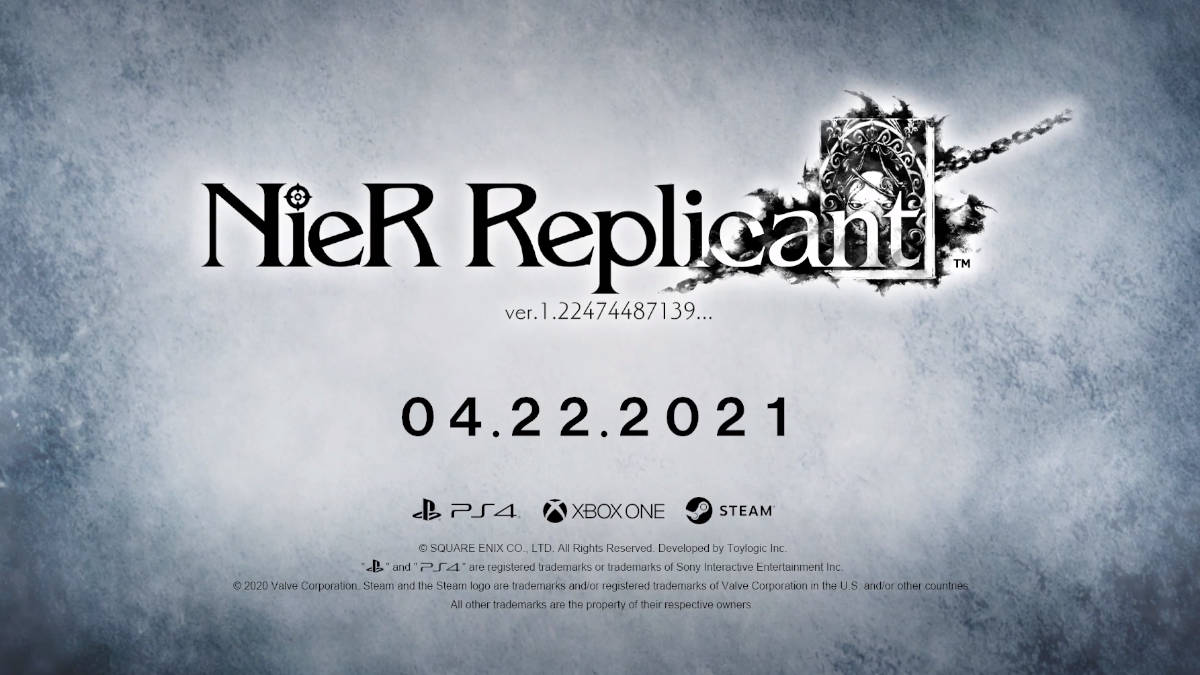Code Vein Review – Waifu Souls
Code Vein was supposed to release a year ago, September 28. One could only assume that the delay was most probably due to getting in some last minute polish into the game. With its creative direction already established as what was looking to be a game with heavy anime and God Eater influence, gameplay was most certainly an important aspect that had to be perfected, being a “souls-like” clone. What made these Soulsborne games successful from the get go was the fact that even though it was aimed at a niche masocore audience, the battle system and the satisfaction you got after the fact was extremely well made. Bloodborne, Nioh, and Sekiro have successfully recreated that, but did the year of delay help Code Vein achieve that which evades most clones?
To simply get it out of the way, Code Vein is an anime style Souls inspired game. There is no other way around it and the gameplay and user interface will almost immediately remind you of Dark Souls or Bloodborne, and may or may not cause some hair pulling because of the difficulty. We clear on that? Good. For the sake of this review, I want to focus on Code Vein’s merits more rather than dumbing it down to a clone because there was certainly some effort put into that attempt. Here is our review of Code Vein!
Uwu?
The world of Code Vein is one of mystery, intrigue, and drama. That’s right folks, the game actually has some fleshed out narrative behind it. Humanity has been threatened by some unknown, monstrous force and to combat this, they made monsters of their own – Revenants. These immortal soldiers are basically vampires with their hearts intact, surviving on blood as do all Vampires do. While they have done their part to somehow stop the impending disaster, Revenants end up being a disaster themselves as giving in to their bloodthirst turns them into one of the “Lost”, now acting on primal instincts.
Your character starts the game in an isolated ruined city called the Vein where you will begin a long journey of discovery. One of the thing the game does is it successfully makes it your story by allowing for character customization. Without exaggeration, Code Vein has one of the most detailed character creation systems I’ve ever seen. Skin color variations have further variations, you can have different pupil colors per eye, and you can even change the patterns on some of your dress items. There is an insane amount of accessories like glasses and jewelry but instead of making your character a walking closet, there’s a limit to the number of accessories you can bring along. On our playthrough, we spent at least an hour into this, making us the perfect anime Waifu to bring along in our journey.
Throughout the game, you’ll meet a mixed bunch of characters, including fellow Revenants on your journey to discover the mysteries of Vein like the cool-headed Louis and ever protective Mia, each with their own sad story to tell. One of the little letdowns in Code Vein is that it’s pretty much a checklist of anime personality tropes. It’s not bad for newcomers to the genre but anime regulars may find an archetype they already seen somewhere else. The story is also something that’s straight out of anime but what makes it unique is that it holds a very depressing and serious tone. You can appreciate the story as you progress through the game and slowly learn about the world and its inhabitants, but it isn’t something to write home about.
I know I said I wouldn’t compare it to Soulsborne games but there are some similarities that we’ll unavoidably have to point out. Code Vein will have you explore the world and progressing the story, all while fighting off Lost and other hostile Revenants. The game is your standard Action RPG where battles are real time and locking onto enemies is possible. Your actions are governed by a stamina meter that is used when you attack and dodge so stamina management is a must to survive. You’ll also have a Home Base where you can move to different locations as long as you were able to activate Mistles, which serve as your checkpoint and respawning locations. As such, any enemy you’ve eliminated along the way will revive once you activate a Mistle.
Haze is the currency of the game and you get this simply by defeating enemies. As simple as this sounds, you’ll be needing a LOT of Haze for a LOT of things – Levelling up, buying equipment, items, and weapons, the list goes on. Haze is important in the game and the abundance of Mistles will mean you’ll want to save often, because dying will cause you to drop all your hard earned Haze in that area, all while respawning at your previous checkpoint to get them back. Die again before recovering the Haze? Say goodbye to it forever. Fortunately, your Home Base has a Hot Spring (don’t ask why, they just have it) where not only can you recap the story as you progress, but are also given the option to retrieve half of your lost Haze without having to run back to get them. Fair trade? I’d say so, especially since you’ll get to see your character along with your friends relax with just a towel on. Definitely a fair trade.
A gift of blood…
Haze isn’t the only thing you’ll need to survive in the vein, as your character will also gain access to what’s called “Blood Codes” and “Gifts”, which are your Classes and abilities or skills respectively. Here’s where Code Vein gets interesting. By equipping different Blood Codes, your stats change according to what you equipped. The Fighter blood code will allow for higher HP and stronger melee attacks while the Caster blood code will, you guessed it right, give you higher Ichor (or MP) and stronger magic attacks. You’ll acquire blood codes simply by progressing through the game and you’ll be able to get these from your companions as well. Louis will give you the Prometheus code, which specializes in fast attacks and parrying while Yakumo will give you Atlas, featuring high stamina and the use of heavy armor. Blood Codes will dictate your style of play and you’ll find that switching codes throughout the game is important to progress through some of the tougher bosses.
Each Blood Code has Gifts, which are basically skills. One important aspect of Gifts is the ability to max out its proficiency, which then allows you to equip that Gift on a different Blood Code. If you want a certain passive ability from a different Code, just max it out and use it on your preferred Code! It’s not a totally new system but what this means is you get to try and use different builds throughout the game until you find one that suits your style.
Blood Codes can also be given to you by your friends or by collecting Vestiges, which are basically hearts of dead Revenants that also houses their memories. Meaning not only do you get a new character class to try out, but you also get a little bit of backstory to that Revenant’s past and some Vestiges will give you some insight on the world of Code Vein, with some being a bit more heartbreaking than others. Some players may not like this style of storytelling, where everything is scattered and fragmented, but it works for this game at the very least.
… and Steel.
Weapons and Blood Veils serve as your primary equipment in the game. Blood Veil is basically your armor set but sounds so much more badass! Some Blood Veils have certain properties like increased resistance to status effects or one that enhances your Gifts, so the best looking one may not necessarily be the best one to equip for your character build. Weapons, on the other hand, are divided into categories such as Swords, Axes, Hammers, Bayonets, and even the This-is-too-big-how-can-you-even-carry-it Sword. As mentioned earlier, your character build will mostly dictate your style of play, so it’s best to choose a weapon that suits that style.
Weapons will only get you so far because difficulty has always been a touchy subject when it comes to souls-like games. Some find it a bit too hard, some relish the challenge. Code Vein eases you in the genre by giving you a less stressful experience because of your AI companion. One great feature is that you are able to bring one of your Revenant friends to the battlefield and it’s great to know they’re pretty competent in a fight! The AI isn’t perfect though and will sometimes be too aggressive but it definitely makes the game a lot easier compared to other titles in the genre. Whether this dilutes your experience of the game is up to you, but the feature actually makes Code Vein a great entry point for players who are grossly intimidated by the steep difficulty curve of Sekiro and Bloodborne.
Speaking of difficulty, what irks me about the game is that instead of working on balancing the enemies, Code Vein’s idea of difficult is simply throwing 5 enemies at you all at the same time. The only way this happens in other Souls games was if you just ran carelessly and lured every single one. In Code Vein, it’s a natural occurrence, and I find it rather cheap that your survival will depend on luck as well and not on skill per se. It also doesn’t help that level design is a bit basic and cramped, which adds the camera angles as another one of your opponents. As mentioned, the game is easier, but still challenging if you don’t approach it with caution.
Bosses in Code Vein are a bit… I guess weird, is what I’ll call it. Some are easy but others will be frustratingly difficult not because of what they do but because of you not being able to make a build suited for that boss. While you should ideally be able to kill any boss with any build, some will be more effective than others and that’s a fact. What I don’t like is that the jump in difficulty between builds is a huge spike upwards, telling me that I’ve spent the past few hours grinding the wrong build. Fortunately, Haze is quite abundant in the game and will make the grind a bit bearable.
What we liked:
- As an anime fan, I loved the anime aesthetic
- Various character builds to try out
What we didn’t like:
- Battles don’t feel as satisfying as they should be
- Game difficulty feels cheap
- Level design is uninspired
Verdict: Wait for it…
This was a tough cookie to rate. I appreciated how much it tried to differentiate itself from being more than a Souls clone, with the character and wardrobe design falling under my kind of “style”. Overall, I didn’t mind it borrowing a lot from it’s older siblings, but a pretty standard anime plot and cast of basic anime archetypes made the journey a little bland. The problem also is that it borrows too much, which really doesn’t differentiate it to the point of having it’s own identity. If you’re looking for a challenging and stylish action RPG, I’d say wait a bit for a sale or maybe a second hand purchase as there really isn’t too much of a new thing here that merits a full purchase. This is not to say Code Vein isn’t good, it actually is a recommended entry point into the genre, but as it stands it’s hard to recommend it at full price.
*The game was reviewed on a PS4 Pro through a review code provided by the publisher





